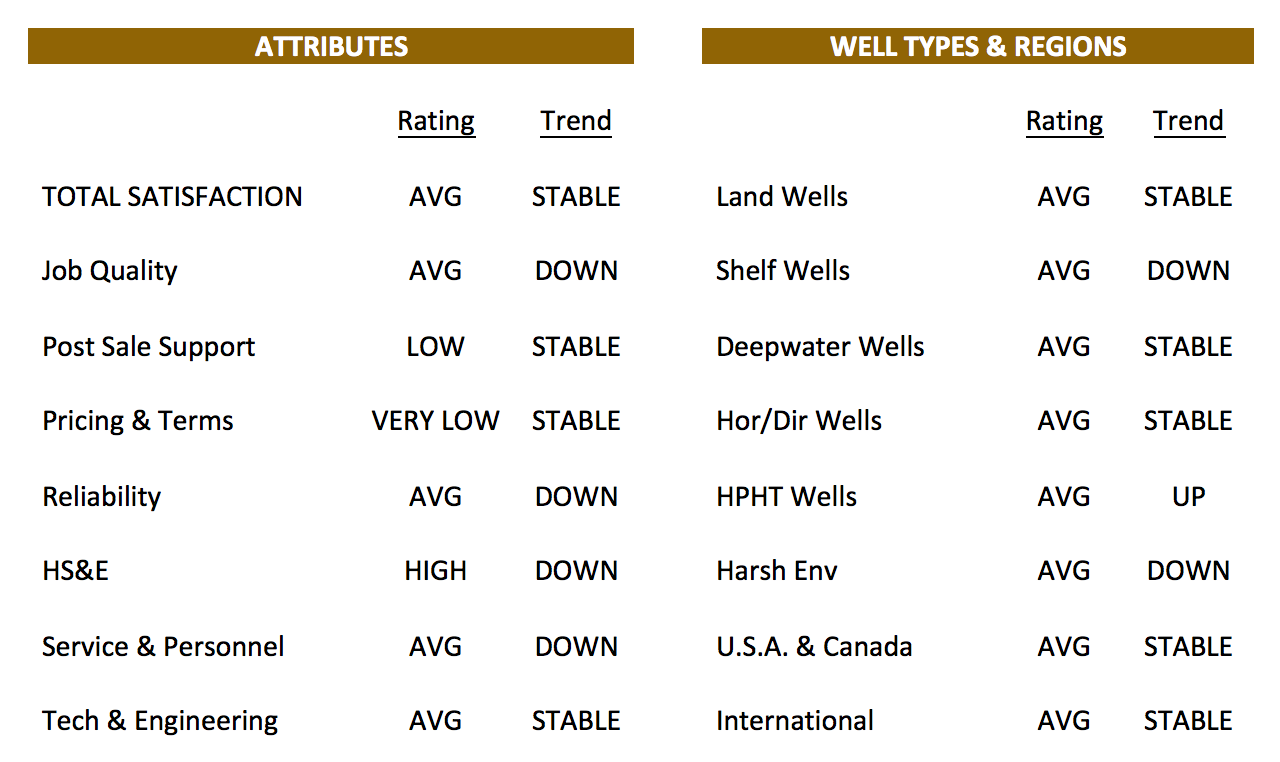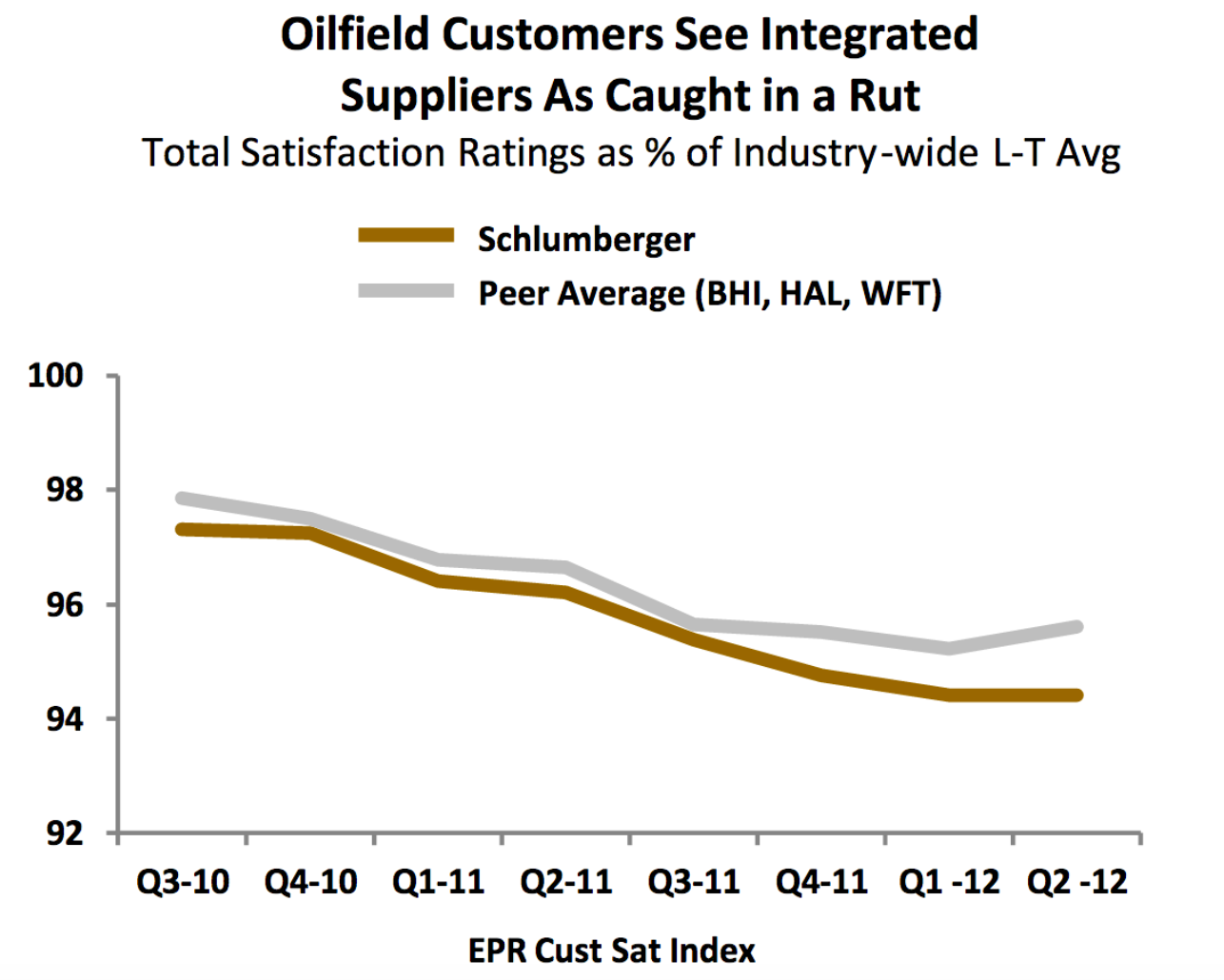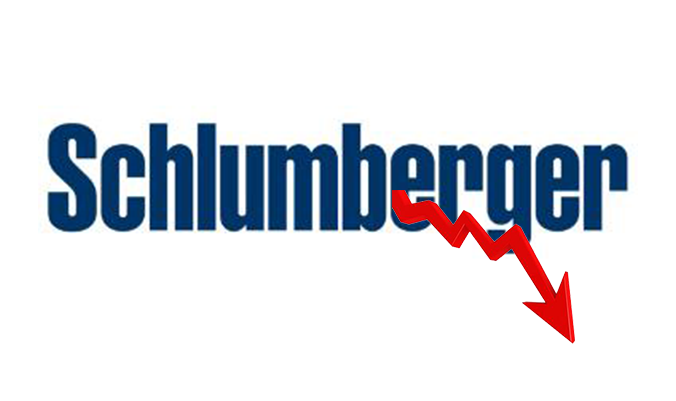As a capable giant in the oilfield, Schlumberger’s tentacles of services, manpower and ingenuity stretch into almost every major facet of exploration and production. Yet, from the purview of overall customer satisfaction, the company can appear more like a straw in a haystack.
To be sure, Schlumberger’s customer satisfaction ratings remain quite strong in the area of formation and well evaluation, a demonstration of strength at its core. In fact, its acoustics-while-drilling and related wireline suite of products and services are considered by some to be must-haves these days. Its scores are also strong in drill bits, drilling fluids, well testing, rotary steerable systems, deep water applications and international markets.
But in other important ways, the company appears more also-ran than a conquering champion. In fact, its ratings have ebbed in numerous dimensions in EnergyPoint Research surveys over the last 24 months.

Note – For a guide to EnergyPoint’s ratings and trends designations, click here.
But why? Schlumberger’s diversity of skills and capabilities arguably protects the company from downturns in certain markets or industry segments. However, that same diversity may also be the most difficult part of steering the ship.
As a group, the integrated oilfield service providers—Schlumberger, Halliburton, Baker Hughes and Weatherford—lag farther behind certain less well-heeled suppliers, even as the energy sector stabilizes in this post-economic downturn, post-Macondo world. But it’s the decline in Schlumberger’s reliability, job quality and service and professionalism marks that we believe have led to its overall position in our surveys.

Customers who use Schlumberger continue, for the most part, to hold its employees in high esteem. Generally speaking, employees of the company are impressed by their colleagues’ depth and breadth of talent and skill.
Over the years, Schlumberger has earned its position and reputation within the industry by leveraging an ever-growing skill-set to offer a wide range of services and technology. This diversity of focus does shield the company from market segment swings like the recent reduction of rigs in North America following a buildup that began in 2011. But as broad as its capabilities may seem, the company can’t realistically expect to lead in every segment of the industry.

The company’s joint venture with Cameron Int’l, OneSubsea, announced in November, may reflect a recognition within the integrated provider that certain specialty jobs are for the specialists. By combining Schlumberger’s expertise in subsea processing and platform integration with Cameron’s position in subsea flow and pressure control, the JV seems an intelligent way for Schlumberger to compete more effectively and efficiently in the space.

We also note an interesting development in the company’s approach to working with its customers. Schlumberger CEO Paal Kibsgaard mentioned recently that the company has been successful with small and medium-sized producers by taking a fresh approach to its value-add proposition.
For example, its SPARK* technology delivery platform allows certain customers the flexibility to apply Schlumberger’s technology using their own pressure pumping crews and equipment. This capital-efficient approach allows Schlumberger to share its expertise and technology with smaller customers without big-footing their projects. In effect, it seeks to gain advantage by imitating the niche firm rather than vice versa.






